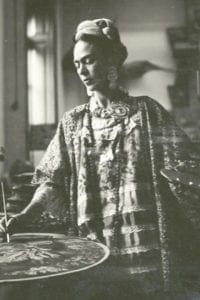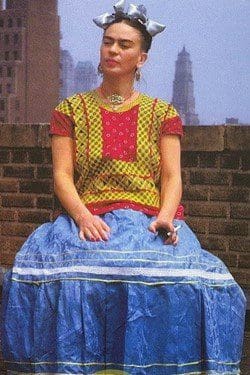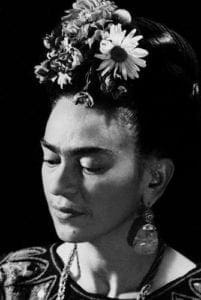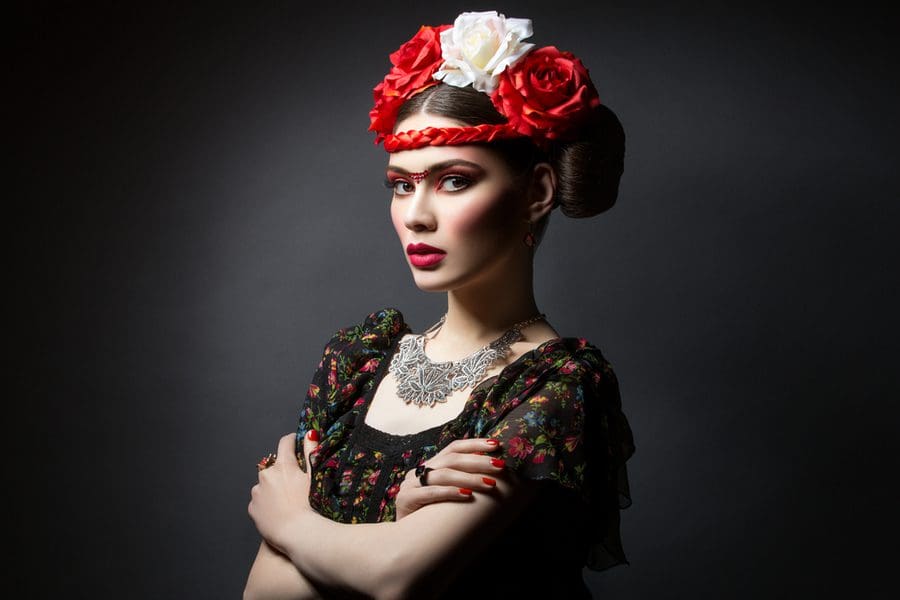With summer quickly approaching, we can’t help but think of sunny days, bright colors, and bold prints. And historically, no one knew color better than Frida Kahlo, who inspired the world not only through her art but through her style as well. And let’s face it, fashion and art truly go hand in hand.
Who was Frida Kahlo?
In short, Frida Kahlo was a Mexican painter known for her Mexican-inspired portraits, self-portraits, and landscape pieces. Kahlo often explored identity, gender, class, and race with her work. But her art isn’t limited to what she could create on a canvas; Kahlo’s entire look and aesthetic has gone down in history.

“I am my own muse, the subject I know best” (Kahlo, crfashionbook.com).
Her rosy cheeks and notorious unibrow have inspired behind several runway shows and designer lines. Artists across the world strive to channel her unique look. Much like her bold and trail-blazing art, Kahlo used what she wore as a powerful tool to express herself personally and politically.
While Kahlo began playing with art and fashion at the young age of eight, it wasn’t until she suffered a tragic accident in her late teens, when she lost a leg, that Kahlo began to transform into the artist we know today.
Kahlo began to show off her Mexican heritage and pride through bright colors and dresses derived from the Oaxaca State’s matriarchal society. These dresses had full skirts and intricate embroidery; they honored women of both the past and present. Kahlo often wore Mexican brightly colored blouses, known as huipiles, to signify traditional clothing’s beauty. These tops were loose-fitting, which provided Kahlo with much-needed comfort and back support following her accident.

“I have a cat’s luck since I do not die so easily, and that’s always something” (Kahlo, crfashionbook.com).
Kahlo was an artist in every sense of the word – she knew herself well. She would often express her originality in unique ways, such as attaching items to her boots and prosthetic leg or painting all of her plaster corsets.
We can’t talk about Kahlo’s iconic style without bringing up her hair. If you aren’t sure whether you’re looking at Frida Kahlo’s portrait, the colorful, elaborate hair would be a dead giveaway. Kahlo oftentimes wore braided hairstyles with flowers and ribbons woven in to add texture and color. Kahlo didn’t just like hair accessories; this woman adored all jewelry. In true Kahlo fashion, she combined modern pieces with politically significant symbols such as the rebozo, which symbolizes the Mexican fight for freedom.

“I leave you my portrait so that you will have my presence all the days and nights that I am away from you.” (crfashionbook.com)
Throughout the 1930s, ’40s, and even today, Kahlo’s use of color, print, and embroidery influenced and influences designers. For years, however, her garments seemed to have vanished. Until 2004, Casa Azul discovered Kahlo’s personal artifacts, artwork, clothing, and accessories in Coyoacan. You can visit an entire museum dedicated to her today.
Tragedy. Adversity. Triumph. Frida Kahlo’s story is one of overcoming and never conforming to societal or gender norms. The world is so much better because of her. Kahlo’s clothing reflects grit, creativity, and the determination of a strong, intelligent woman who will continue to inspire women for generations.






